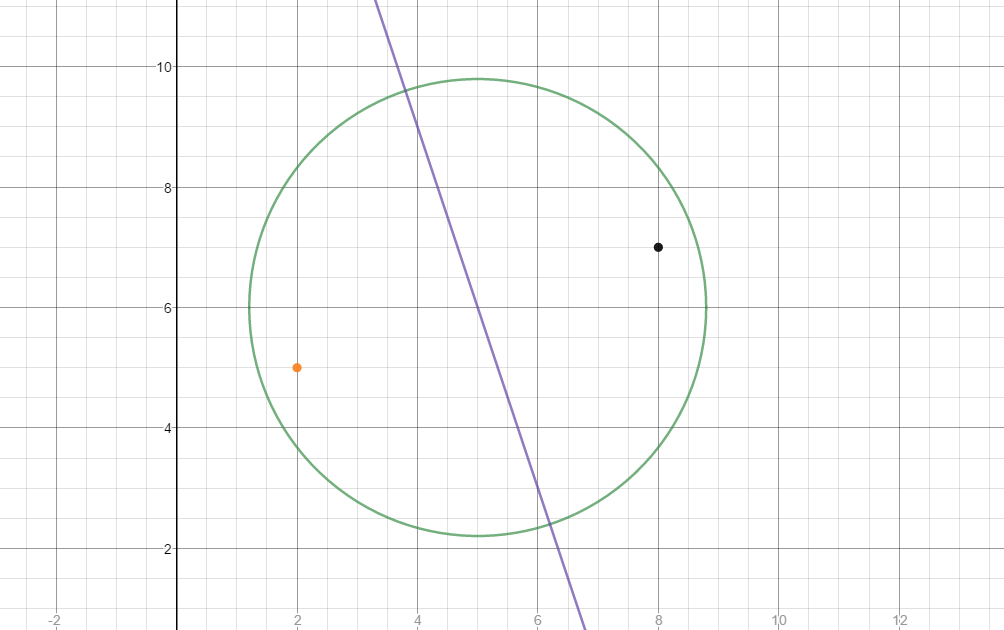An isosceles triangle has sides A, B, and C with sides B and C being equal in length. If side A goes from #(2 ,5 )# to #(8 ,7 )# and the triangle's area is #12 #, what are the possible coordinates of the triangle's third corner?
1 Answer
The possible points are:
Explanation:
The length of side "a" is:
The area of a triangle is:
Using side "a" as the base of the triangle and the given area, we can compute the height:
Think of the height as the radius of a circle upon which the two possible points must lie:
Because the triangle's other two sides are the same length, the center of this circle must be the midpoint between the points #(2, 5) and (8, 7):
Substitute into the equation of the circle:
The two points must, also, lie on a line that is perpendicular to side "a"; the slope, m, of this line is:
Using, this slope, the center point, and the point-slope form of the equation of a line, we write the equation upon which the two points must lie:
Here is a graph of the equation [1], equation [2] and the two given points:

Substitute the right side of equation [2] into equation [1]:
To obtain the corresponding y values, substitute these x values into equation [2]
